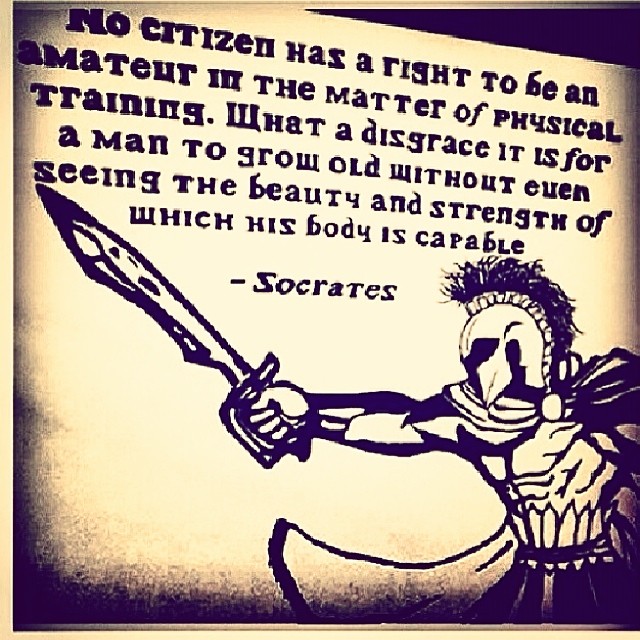
I wrote about “Strong & Useless” in my Encyclopedia of Underground Strength & Conditioning.
It’s when an athlete can move big weights on the barbell but can’t do basic bodyweight exercises such as lunges, pull ups, pushups, sprints, and jumps. I always say, Strong is Strong. This is why I don’t chase the 1 RM testing you see so often in high school weight rooms.
The first athlete who demonstrated Strong & Useless to me held all the weight room records for his high school football team. He could bench 315 for 3-5 reps, trap bar DL 495, Box Squat 405……
But he couldn’t hold the Kettlebells for more than 1 set in Farmer Walks. By the second set, his grip would give out and he could barely close his hands. The Kettlebells would literally fly out of his hands, I had never seen anything like it.
After 2 sets of prowler sprints of 100 ft, he would throw up and be useless. He was always quitting during a workout because for YEARS, all he did was lift heavy. He ate big and lifted big. I love Powerlifting but if you’re a sport athlete, you must train for the needs of your sport. Powerlifting methods are often part of the equation, certainly not the end all be all for sports performance.
Tip # 1: The big guys need more all-around fitness, more GPP and what I call Functional Strength. Send those big guys outside to push sleds, push wheelbarrows, carry odd objects and train like farm boys. Have them throwing med balls from various directions and push them to dominate the calisthenics.
Tip # 2: Incorporate the strength lifts with free weights but also perform some high rep bodybuilding work, some sprint work and short finishers of 6 – 10 minutes. We do these intense finishers on the regular and they commonly involve sleds and carries. We have endless farmer walk / carry variations.
It can be as simple (NOT easy) as 3-4 exercises for 3 rounds.
For example:
A) ANY Carry (Perform a Different Carry Every Set) x 150 ft
B) ANY Sled (Drags or Sprints, Different Every Set) x 150 ft
C) Thick Grip BB Curls x 6-10 reps
D) Lying DB Triceps XTs or Band Pushdowns x 15-20 reps
Tip #3: And no matter what anyone tells you, you can’t out train a bad diet or lifestyle. I’ve seen plenty of high school and college athletes who work extremely hard yet eat poorly and sleep poorly. They have a flabby look to them, their muscles are not lean or muscular, overall, they look average at best. It ALL counts.
I can look at a physique and immediately see how they eat: Some athletes look like pasta and potato chips. I can see they've been raised on that crap food.The boys have boobs and rolly guts.
The kids who eat eggs, meats, fruits, veggies and the like have a solid look to them. They look solid, as if they've worked on a farm for years. Your body is a reflection of your eating habits.
Tip #4: The best story I have was way back in the day when I created my first DVD, Ancient Training Methods. A Football Coach had a team that went 1-9. He bought the DVD (Now it is inside The Underground Strength Academy) and immediately put the info to use that Spring and Summer. IMMEDIATELY. He sent me photos on the regular of his team attacking their training.
He built and picked up the following:
- tree logs chopped into 3 and 4 ft sections from a local tree company
- Sandbags he made from 40 – 100 lbs
- Various tractor tires from 250 to 500 lbs
- Sleds made from spare tires of various sizes and weights
He coupled the Ancient Training Methods with basic weight room training that I have outlined in this manual. I must admit, I am partial to the high school strength coach who is out there learning & truly trying to get better for the kids, investing in knowledge to get the kids better.
This Football team went 10-1 the next season, only losing their final game in the playoffs. I was getting photos of his team flipping tires, dragging sleds in the parking lot, large groups training with sandbags. It was awesome!
Equally inspiring was seeing a Coach being so proactive in learning and improving his knowledge for the betterment of his team.
THAT is the "tip". Always be hungry to improve. You can only improve by learning more and getting uncomfortable. This requires you to lose your ego and open up your mind to greater knowledge.
The human body is a complex system. You might be training yourself for 10, 20 or 30 years but training other people is a different world. You must constantly seek knowledge, constantly apply and learn more and better methods. Don’t ever think you’re too good or have all the answers.
Hence, this is why I don't trust "Coaches" who don't coach others.
How long does it take to “get in shape”? First off, that is a general question, isn’t it? There are many factors that we can consider regarding your work capacity/fitness/GPP or any other word you want to throw around. In a nutshell, are you capable of doing your job/sport at a high level AND able to consistently perform at a high level?
What are you training for?
What does your sport / career / work / daily life require of you?
Some factors to consider:
- Nutrition (Better eating = Better results & performance)
- Body Fat / Lean Body Mass (Where are you now vs where you need to be)
- Genetics
- Self Motivation / Discipline (Do you do the work or make excuses?)
- Environment (Have you noticed how certain teams consistently win, others consistently lose and others consistently are average? What is normal for you? Elevate your “normal” and get around other high achievers!)
- Consistency / Follow Through (You can’t get better only training some of the time or when it’s convenient)
Mindset / Attitude (A negative mindset will slow down progress dramatically)
I train athletes year-round with GPP. We always do sleds and all types of carry variations, both during the warm-up and as part of the training. We carry sandbags, sand balls, kegs filled with water, dumbbells, kettlebells and odd-shaped stones plus more.
Tip #5: When an athlete is closing in on the tail end of the season, training gets more and more specific and specialized. Still, it’s consistently basic. I have yet to meet an athlete who is strong enough, fit enough, good enough. We reduce volume of weight room training and make sure the athlete is focused on sports skills over weight room training.
Greater work capacity gets your body prepared for the difficult strength training workouts, the difficult practices and the intense demands of being an athlete. Especially as athletes transition from middle school to high school, the sports season is longer and the demands are greater. Same goes for the transition into college. If you’re out of shape you will find these athletes are injured or emotionally struggling mid-way into the season.
Believe it or not, I consistently see incoming college freshman and even experienced college athletes who struggle to properly perform a full range bodyweight squats, proper pushups and proper pull-ups. This tells me that these athletes missed a crucial developmental phase in their training. Or, they were trained incorrectly.
Tip #6: You can’t just throw an athlete into a program of back squats, cleans, deads and other advanced exercises. The training our new athletes go through at The Underground Strength Gym is very much what I do with college athletes at The D1 level when I first begin training them.
Here are some sample intro style workouts focused on GPP and building a wide base of strength and durability.
1) Warm up with Gymnastic Drills (Cartwheels, Tumbling, Jumping, Hand Walking) and Calisthenics (Hindu Push Ups, Split Squats, Pull Ups, Recline Rows) for 10 minutes.
Add bands (face pulls, triceps, pull aparts) and sleds. Perform stability work for the trunk (Dead Bugs, Side Planks) as well as med ball throws to prep the nervous system for aggressive training.
2A) 1 Arm DB or KB Clean & Press x 5, 4, 3, 2, 1
2B) Recline Row 5 x 90%
3A) Weighted Push Ups 4 x 8 – 12
3B) Walking Weighted Lunges 4 x 10 / 10 (Vary the loading position each set)
3C) Band Face Pulls 4 x 15
4A) Farmer Walk 3 x 150 ft
4B) Sleds 3 x 150 ft
4C) Back XT 3 x 10-15
5A) Band Triceps 3 x Max (20-30 reps)
5B) Any Grip Work 3 x
In between the couplets of exercises, we sneak in various ab work, band pull-aparts and some quick sets of 100 reps of jump rope. During the warm-up portion after gymnastics, we do light dumbbell and kettlebell work, band work for shoulders and triceps. There’s basically a LOT of work going on, building the body up inch by inch, brick by brick.
Think of your athletic potential as a triangle. The foundation of your athletic potential is the base of the triangle. The larger and wider the base is, the greater the peak and now we have the potential to develop greater physical capacity.
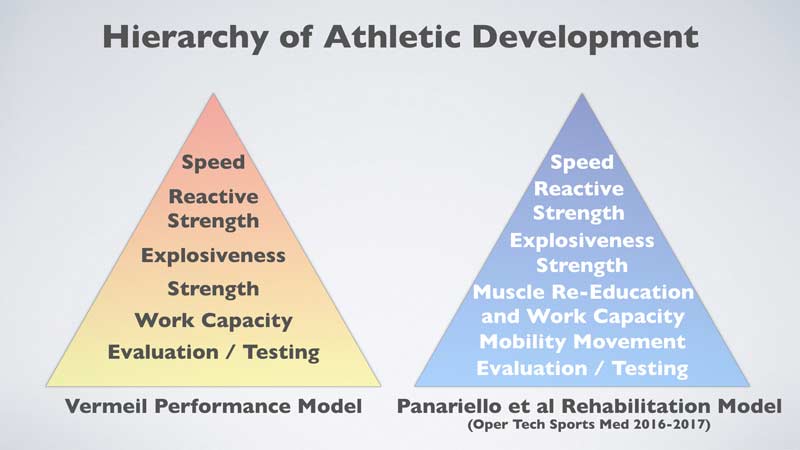
Photo Cred via SimpliFaster
Pretty much all of our workouts improve the work capacity of an athlete because we tend to push the pace fast during training and often perform supersets. It pushes the body to get in shape as opposed to the traditional methods of performing 1 exercise, rest, repeat. That gets pretty boring as well.
In essence, your GPP should focus on bringing up / working on your weak areas. And as strange as this sounds, most people are just straight up WEAK. Everything needs work!
Tip #7: Build Your Weak Areas into STRONG Areas.
It obviously makes perfect sense to attack your weak areas, but not too many people want to work on weak areas. Squats, Deads, Carries – these are TOUGH exercises. Yet, ask an athlete what they want to train, and they will tell you they want to bench and curl. I love those exercises but before you bench, can you perform 20, 30 or 40 pushups with a 20-40 lb weight vest? Can you perform strict, full range pull ups for 10+ reps? Your back and shoulders support your bench BIG time. Build the foundation.
Build up those triceps and elbows with 100 reps of light band triceps work and light dumbbell benching from all angles: floor, flat, incline, and decline. In a nutshell, you must DO THE WORK. Laziness never wins. Laziness is a crime.
If you want to get better at what you do, be it in sports or your job, attack those weak areas. It will improve your overall athletic game as well as help reduce the likelihood of injuries to those areas.
If you truly want to make a training session “General”, then perform very simple movements such as truck pushing, sandbag carries, sled drags in all directions, pushups, and pull-ups. These movements are not requiring a high level of skill, rather they are all about utilizing your entire body to carry, push and pull heavy objects. Add hill sprints or trail running or play a game of pick up Basketball, Soccer, etc – these sports work your body from multiple angles. It’s great seeing adults who are still moving their body through pick up sports games or in BJJ.
On the internet, you may read about GPP workouts being separate workouts in their own right, also called “extra workouts”. This is an option for some who have the time but most people nowadays, time is a luxury. Inside The Underground Strength Manual we have a TON of "GPP Workouts" or mini / extra workouts for athletes.
If they are truly extra workouts done on their own, then the intensity should be lesser than your regular training days. These “extra” days should last 30 minutes or less. Remember, these are not full-blown workouts, they might be considered “feeder” workouts or “mini” workouts that enhance recovery and allow you to improve your physical preparation. They can be as short as 10 minutes.
The body cannot tolerate high-intensity training every day, so these mini workouts are great for helping you physically and mentally tolerate the intense training required for serious athletes and strength fanatics. The extra workouts improve recovery and alleviate soreness.
For me personally, I LOVE training every day but I don’t consider training to only be in the weight room. I might play Tennis with my daughter for 1 or 2 hours and that’s my training. I might go Mountain Biking and that’s my training.
My buddy Jim Steel does the same – our program as we’ve gotten older is Training for Life. We train hard and do anything we feel like doing. I saw Jim training one day, and he was doing dumbbell side raises coupled with punching a heavy bag for 10 rounds.
GPP training can be done during a regular work out as a finisher. Sledge Hammer strikes on a big tire, farmer walks with various implements, and sled work is great additions to a strength and conditioning program. I do these often with athletes to give them full body work. GPP builds durability both physically and mentally. GPP is needed to prepare the athlete for the sports season so that they can handle all the practices, the competition and the stress of sports in general.
Why do I emphasize durability / GPP? Because “back in the day” (I sound so old saying that) kids played in the streets. Kids mowed the lawn. Kids went out shoveling for hours during the snow storm. Overall, kids were active all day minus their time spent seated at school. Nowadays, kids sit all day at school, and then many sit all day at home. If they are active, it’s coached and organized. There is no free play or at least, very little free play happening nowadays.
I asked Dr. Andy Galpin why some kids I train still look like a melted candlestick. He said it’s because training in the weight room is NOT enough to create powerful change. Kids need some manual labor. Kids need to work. This is why you hear me using the phrase “Farm Boy Strong”. Andy told me how he spent his Summers digging ditches working with his Dad and Uncles.
I used to mow the lawn, had paper routes which I delivered on my bike, etc. Then in High School, I began mowing lawns for work, often, 3 lawns per day on the weekend. Before I got my driver’s my license, I rode my bike to the gym, which was 20 minutes away on bike. I have athletes who can walk to my gym in 5 minutes, yet they are getting a ride to the gym from parents. You can’t create change when people avoid the work!
Sometimes I’ll warm up athletes with our normal warm-up routine and then I will pair them up and send them on a partner 400 meter carry relay. I carry 50-75 ft and then you carry. Sandbags, Kettlebells – just go for a walk. Louie Simmons does this with his fighters at Westside Barbell, sled drags or wheelbarrow pushing for 1/2 to 1 mile.
For those of you who are hunters or outdoorsmen, this 1/2 or 1-mile drag and carry workout would be great if you have to carry your animal out of the woods.
When I can’t get to the gym because of work and all my kids’ sports, I will put a sand ball in the back of my truck or a Kettlebell. When my kids are in sports, I’ll attack some training with one tool. Here’s a recent sample I did with a 70 lb Ball:
- 1A) Sand Ball Shoulder Carry 10 x 150 ft (switch shoulders at 75 ft)
- 1B) Sand Ball Zercher Squat 10 x 10
- 2) Push Ups 5 x 20
This was simple yet brutal. I hadn’t done a high-volume squat workout like this in ages and more than anything, it was a great mental test to push myself out of my comfort zone.
There have been times where I have experimented with adding GPP at the beginning of my workouts as a warm-up. Louie Simmons advised me to start doing a few sets of moderate rep deadlifts (8-15 reps) to improve my ability to hit powerful takedowns for the full length of a wrestling match. When I was competing in BJJ, I would find myself fatigued after a few rounds of sparring in practice, and I wanted to have conditioned that never stopped.
I would get angry that I was showing signs of fatigue. The best conditioning for me was to actually train and practice more in BJJ. The more I trained, the more my body adapted to moving in a Gi, better technique, etc. The law of specificity means you will get better at the very thing you train at the most. But if you overdo this training, you can sometimes find yourself becoming de-conditioned. Through practice, you must find what is the optimal blend of training in your sport plus what you do outside of your sport.
The great Vasily Alekseyev was known for performing high reps in his warm-ups, such as power snatching a barbell of 100 kilos (throwing the bar overhead, outdoors on grass). He would do this for several minutes. He would also walk through knee-high water for 20 or 30 minutes, lifting his knees high while walking to work his hips and abs.
Think outside the box. Don’t conform. Challenge your body and challenge your mind.
I have tested various Deadlifts with 135 – 185 lbs and doing 3 sets of 15 reps along with kettlebell swings and the reverse hyper. Sumo Deads, conventional and RDL style. This hit the body from all angles but can also fatigue the lower back heavily. So, I prefer to avoid this high rep work in the season with wrestlers or other combat/field athletes.
This high rep posterior work gets the lower back and hamstrings firing, and we all need those muscles to be strong and powerful. A strong athlete has strong legs and a strong back. I’ve noticed how an athlete who has skinny legs tends to fatigue faster. In wrestling, you can see the wrestlers’ physique, and I am constantly assessing. I found it interesting to see the wrestler with skinny legs struggled in the 3rd period.
Even during the winter time, I suggest you bundle up with warm clothes, put on your gloves and get outdoors to do the sled dragging, truck pushing and rope pulling on a weighted sled. If it’s only a few sets of 150 ft of sleds, just get out there in shorts and a t-shirt. Most of my Underground Strength Gym locations have been small, so we did sleds outside including during the winter time.
I get asked all the time, “what is a substitute for the sled?”
There is NO substitute. Just do the work, stop finding another way and another excuse. It’s a sign of weakness. Do the Work.
GPP is General Physical Preparation. Key word being “General”. Do the very things that increase and improve your overall fitness. These can be extra workouts done separately, or they can be how you organize your workouts.
Instead of straight sets, perform couplets/supersets, take a look at the old school Arnold books, they constantly did supersets. Why waste time standing around when you can get busy doing the work.
Add Jump rope x 100 reps sporadically through your workouts
Begin and Finish training sessions with 5-10 minutes of sled work
Begin and Finish training session with hard 400 mtr. Run
Perhaps you have a rest day planned, but you want some extra work. Instead of a full training session, your GPP day can be a GTG / Grease the Groove style day:
- Pull-Ups sprinkled into your day until you reach 50 total reps
- 20 Push Ups every other hour during your work day
- 20 KB Swings every other hour during your work day
Or, you can use all 3 of the above exercises mixed in during your day. If you work from home, it’s great to work for 50 minutes and then have a 10-minute break. Take a walk or a jog for 10 minutes, sneak in KB swings or calisthenics for a set – ALL of this movement recharges the mind AND body.
When the athletes I train come in for extra workouts, I program their workout based on their weak points. They see the extra workout planned and often hope it was all benching and arms. I’ve learned that you must meet these kids in the middle. Keep it fun, whatever it takes. So, I’ll program the extra for their weak points, and after that, they have the freedom to do what they want.
It’s important for athletes to learn on their own and gain some independence. Kids nowadays don’t even know how to do a barbell curl! Think about it, when I was a kid, a preteen, if I saw my brothers weights lying around, I curled it!
I devoured books and magazines on my own. I remember sitting on the floor in a book store and reading ALL of their books. Or at the local convenience store, the owner posted a sign on the magazine stand, “This is NOT a library. If you want to read these magazines, BUY them!”
I was in shock because I KNEW he was talking about me! I would go there on my bike and read ALL the bodybuilding magazines. I was starving for information. With the internet, I still suggest you get up and get out to the local library. See what bodybuilding and strength books they have, hopefully, some of the older books that are filled with golden information.
If athletes are coached, and hand held the entire time, we’re not helping them. They need some freedom; they need to make mistakes and need to be able to correct those mistakes on their own, by thinking for themselves.
For most athletes, the weakest part of their body is everything they cannot see when looking in the mirror, the posterior chain. Well, most athletes are just overall weak nowadays. We discuss this heavily through The Underground Strength Coach Cert.
I see this at the college level as well. Something I never imagined I would see are college athletes unable to perform a full range bodyweight squat. College athletes who can’t perform proper pushups or pull-ups.
This is another reason/example as to the need for better coaching and better Physical Education programs. How does an athlete get to a D1 University and do not know proper technique in calisthenics?
Strengthening the posterior chain makes an athlete stronger, more powerful, less likely to become injured and balances the strength from the front of the body as well. Seeing these common weak areas and common mobility issues (Hips, Ankles, Mid Back, Lats) encouraged me to tweak our warm-ups to work these weak areas before we hit the workout AND after the workout.
Here is a List of Some of the exercises I like to include and vary in the warm-up that add strength to the posterior AND increase mobility:
- Pause bodyweight squats (3 -5 second pause in bottom)
- Back Extensions
- KB Cleans (KBs travel behind the legs, deep stretch)
- KB Swings
- Bulgarian Split Squats
- Couch Stretch x 1 minute each leg
- Single Leg RDL (Bodyweight or Light Weight)
- Sled Drags forward / backward
- Leg Curls w/ bands (seated) or Leg Curls w/ Ankle Weights
- Banded Good Mornings
- Hanging Leg Raises
- Band Face Pulls
- Bands Pull Aparts
- Bands Tricep Pushdowns
- Yoga Push Ups
- Walking Lunges
- Forward & Reverse Lunges
- Lateral Lunges
Here’s a sample warm-up that we do right after our gymnastics/movement prep warm up:
1A) Sleds x 100 ft
1B) 1 Arm KB Carry (50 ft each: overhead, rack, suitcase)
1C) 1 Arm KB Clean & Press x 5 / 5
1D) Recline Row x 10
1E) Walking Lunges x 100 ft.
1F) Jump Rope x 100 reps
1G) DB Bench x 20 reps (10 reps elbows out, 10 reps palms in)
1H) Band Pull Aparts x 15 / 15 (overhand/underhand)
1I) 2 Different Ab Exercises (Side Plank + hanging leg raise)
After the above, we do the extra posterior work for 2 or 3 sets, something like this:
- Band Triceps 3 x 20-30 reps
- Band Face Pull 3 x 15
- Back XT (45 degree or horizontal) 3 x 15
Of course, eventually the above gets stale, so change the above warm up every 2 or 3 weeks, or every week for a more advanced lifter.
The above warm-up would be more like a workout for a beginner. What I do for a beginner is teach them the warm-up above, but instead of 1 set of each, I’ll have them pair up 2 or 3 exercises and perform them for 2 or 3 rounds. It gives the beginner athlete opportunity to work on skill, improve technique and not rush through a warm-up.
After a few sessions of the above for a beginner, they are already showing signs of improvement. They have better strength, better coordination, and better technique. In turn, they begin building confidence.
The circuit warmup above can be intensified for an intermediate or advanced lifter, performed for 3 or 4 rounds but with heavier weights on each round. That would be a solid GPP circuit and can alleviate soreness and increase focus if you need to do so before the man training session.
Regarding GPP workouts, make sure you are not overdoing it. Do just enough and be done with it. The key to smarter, more optimal training is understanding that you can only get better from the work you can recover from.
Training is not just what you do in the gym; it’s everything else you do! It’s lifestyle; it’s sleep, it’s your social circles, it’s your psychology. There are MANY pieces of the puzzle when it comes to training and the results you get from training. So remember, training is everything we do, not just what we do in the gym.
If you overdo it, you’ll know. How will you know? Your motivation will be lacking. You’ll feel sluggish. You will feel like you need to rest or take the day off the following day. Your desire for a week off from training will creep in. When this happens, I suggest taking a few days off and most importantly, get on track with your eating and sleeping.
Get 9 hours of sleep per night. Stock the fridge with plenty of wholesome foods, get rid of all the processed junk. Dialing in sleep and nutrition are the main ingredients most of the time. If time allows, get a 1 hr nap in midday as well. The strongest people I’ve met have always been disciplined with their eating and sleep habits.
I made tremendous gains in the program I mentioned earlier, 4 days split, every other day training, 2 days off post the leg day. I outlined this program in my Gladiator Training Manual HERE.
What you need in your training will change as you change. The human body evolves so as you gain more experience, you need to train smarter and implement more brain power into your workouts. For example, after injuries, career changes, graduating college, finishing sports, changes goals – ALL of these changes in your life will require your training and lifestyle to evolve as well.
If you feel wiped out the next day after a GPP workout, it was too strenuous and would be considered a normal training session.
Here are a few sample GPP workouts for a better understanding of how these will look like when done as “feeder workouts” to help you feel better vs. making you feel rundown:
Session 1:
- Forward & backward Sled-drag, strapped around weight belt – 8 minutes, nonstop, alternate directions every minute
- 2A. Pull-ups – 5 x 5 reps
- 2B. Push-ups – 5 x 10 reps
Session 2: perform movements 1 – 4 in circuit fashion for 3 rounds
- Recline Row 3 x 12 reps
- Hanging Leg Rause 3 x 12 reps
- Ring Push-ups 3 x 12 reps
- Walking Lunges 3 x 20 / 20
- Med Ball Rotational Throw against Wall 3 x 12 / 12
Session 3:
- Farmer Walk KBs or FBs x 400 mtr.
- Every time you stop, perform 10-20 push-ups. Reps of push-ups depend on your level of strength.
GPP Workouts change with your goals and age as well. My buddy Jim Steel and I always say to one another. Training is training. What we mean is that it’s ALL work. As we have gotten older, we’re training for life, NOT trophies.
A different example: I had a young wrestler start training with me the summer before he entered high school. Physically, he was very weak and needed a lot of GPP. Let me rephrase that, A LOT OF GPP!! He was unable to do 1 pull up, and his pushups were quite weak as well. His core would sag on pushups, and he had no muscle on his body. He spent years doing pushups incorrectly during wrestling practice.
His homework was to hit extra pushups, pull-ups & squats EVERY DAY at home, ONLY with perfect technique.
This was his homework assignment:
He started by jumping into the top portion of the pull-up & lowering himself slowly a few times a day throughout the entire day. A little more extra training after school, again in the evening and again a little before bedtime he repeated these movements. He did the same for pushups.
5 reps of pushups in the morning, after school and at night. That totals 15 reps a day, 75 a week and 300 a month if you do 5 reps at a time. It doesn’t take much when working with weaker athletes. In fact, I find it easier to recommend these “mini workouts” vs. telling them to do a full training session. Doing 5 pushups and 5 squats three times a day takes less than a minute each time.
I have always had respect for calisthenics since my earliest days of training. I did calisthenics every morning when I was prepping for a 12 hr Challenge run by Navy SEALs. I had a squat rack in my garage with pull up bars and did this for 5 rounds first thing every morning:
- Pull-Ups x 5
- Push-Ups x 10
- Squats x 15
I got better at this circuit every week, and overall muscular endurance and fitness went up every week. During the first few weeks, I could feel myself fatiguing in the legs. With each passing week, I could feel myself getting better, moving faster, feeling more energetic through the circuit.
The young athletes that do these calisthenics at home get better every week as well. In one week, I’ll see a struggling athlete able to now do 1 full range pull up and 10 pushups. We then start having him do a total of 10 pull-ups and 20 pushups every day, setting bigger goals and challenging the kids more.
In a week he was doing 3 pull-ups in a row, and we upped the total to 3 rounds a day, 9 total pull ups each day. These reps add up throughout the day, and this younger, weaker generation needs the GTG / Grease the Groove.
Doing 10 Push Ups and 5 pull-ups take 1 minute. 3 times a day is 3 total minutes of work. We ALL have 3 minutes. It’s easy to get better. Don’t complicate it. If you coach young athletes who are struggling, give them the knowledge and encouragement to do this extra work at home. Nothing feels better than getting stronger for these younger athletes.
I have also applied/tested GTG to my Deadlift, mainly because I wanted to have Strength without needing a warm up. I wanted “Real World Strength.” I wanted to be ready for work without a warm-up. My mind operates in strange ways sometimes, or at least others think I am strange. I had been in street fights before or altercations where I didn’t get time to say, “Hold on, let me warm up.”
My saying is If you are always ready, you NEVER have to get ready.
In my garage, I left the bar loaded to 275 and 325 and would hit a few reps of Deadlifts, a few times a day, a few times a week. I did this for a few weeks and felt that cold deadlift get easier and easier. From a mental standpoint, it felt great because I am one who NEEDS “iron therapy”. I need to lift some weights and do hard physical activity for my mind, not just the body. It makes me feel good, so I do it.
The GTG Deadlifting was a BIG help to me after Hurricane Sandy hit NJ and I had to carry our gas-filled generator in and out of the garage 2 times a night, NO warm up, middle of the night. It didn’t matter. I was strong without a warm-up, carrying that oddly shaped generator, filled with gas. This is a good method for the military, LEO and first responders who have to perform on the spot, no warm-ups. This is an advanced method of GTG when using heavy weights, but beginners all the way to advanced can use GTG with calisthenics.
Strength is a skill. To improve at a skill, you must execute perfect practice, not just practice. Working the groove seems to work very well with challenging bodyweight movements such as handstand pushups, pull-ups, pistols, and 1 arm pushups. So if you are new to training, remember that strength is a skill, as is BJJ, Muay Thai, Boxing, Basketball, Baseball, throwing a ball properly, etc. – you must practice the skills regularly to improve on them. The same principle applies to become stronger.
NEVER Underestimate How Weak New Athletes Can Be, regardless of age. I’ve seen enough athletes from high school to adult unable to go beyond the beginning of our warm-up which might be a few sets of lunges and pushups and 2 sets of sleds. In 5 minutes they are done.
Everyone has a different starting point. For those who don’t train properly, never trained or simply stopped training, they will NOT be strong or fit. After 2 weeks of stopping training, strength begins to diminish. Young athletes nowadays have little if any guidance. You need to prepare for slow and steady training.
The young/new athlete training is very simple and focused on GPP training:
- Sandbag Carries / KB Carries (Rack & Farmer)
- Pull Ups (Varied Grips)
- Recline Row on Rings or Rope
- Push Ups (Eventually Weighted Push Ups)
- Med Ball Slams into the ground
- Med Ball Rotational + Chest Passes Against Wall
- Sled Drags / Prowler Pushes
- Kettlebell Basics (Goblet Squat, Clean & Press)
- Band Pull Apart (BPAs), Band Triceps
- Back Extensions
- Lunge Variations
- Bulgarian Split Squats
- DB Hammer Curls
All of these movements are super basic, easy to teach and easy to learn. Many of them would be accessory work for advanced lifters. For variety, I implement different set and rep patterns for the beginner as the beginner doesn’t need too much variety of exercises.
Here are 3 things I believe are crucial movements, especially for beginners and intermediates:
- Carries of all types
- Calisthenics
- Sleds
Mix up the variations of the 3 movement categories above, and you get in some great training. We have so many different objects and tools in my gym for Carries that we can have 20 different variations of carries. Calisthenics can become very creative as the athlete gets stronger.
Our new athletes have shorter training sessions, preferably about 45 minutes, while the other experienced athletes train for an hour. Many times, they stay after and do their extra work. The younger athletes need to be done before they’re done. This means they leave the gym with energy in the tank. That inspires them to do a little on their own and not feel emotionally crushed from struggling. We want young athletes to feel confident in their efforts. As this confidence builds, the challenges increase. If a beginner gets crushed, they will never want to come back. Slow and steady works best for the beginner.
Beginner athletes in middle school will start training with me 2x week. Once they’re midway through 8th grade, I advise 3 x weekly training if their time and schedule allows, and, if they show the desire to get after it!
High School athletes are advised 3 x week if their schedule allows and same with adults. This doesn’t mean I stop them from training 4 or 5 x week. I try to find a middle ground and let their motivation and schedule handle the rest.
Results not coming fast enough? Let’s look at nutrition, sleep and of course, do we need more training together, training on your own? We’re in a world where secrets and shortcuts are constantly being offered. I have NONE of that for you. I am offering hard work on the basics, consistency, and dedication. These are the Very things most people are trying to avoid.
Not me and not the most successful athletes – the best athletes are masters of the mundane. They master eating, sleeping, lifestyle, sports skills and they attack the basics.
Once an athlete starts to demonstrate strength and control of the warm-ups, the calisthenics and carries, we introduce the trap bar deadlift. If the athlete needs hip mobility, we attack goblet squats, lunges, and Bulgarian split squats. You’ll be amazed at how many young athletes do NOT bend their knees and hunch over when lifting even the lightest weights. We can’t have young kids moving like old geezers.
The movement first and always a priority. Then, we can begin loading movements. Sometimes an athlete needs a private pep talk and gives him a list of what to do at home and what needs to be seen in the weight room before they are allowed to squat, deadlift, bench press, etc. Create standards of movement, standards of reps for calisthenics, etc. Let them see the standards and challenge them to crush those standards. Goals are crucial for training and Life.
Adults need GPP training as well. At The Underground Strength Gym, when we train adults, we train them with some basic powerlifting and bodybuilding training. Then they work our 3 crucial movements: Calisthenics, Carries, and Sleds.
Adults who have lost muscle mass need higher reps to get the joints lubricated, and those high reps help them feel good. They’re getting a good pump, their joints are getting stronger, and they aren’t nervous since the weights are light. Again, build the body AND the mind.
Here are a Few Sample GPP workouts:
These workouts are going to be short, 10 – 20 minutes, choosing higher reps and a fast pace, very little rest in between sets.
- Workout # 1: Pull-ups, pushups on medicine ball, shadow box, sprawls or burpees for a circuit of 5 – 10 minutes & various abdominal work.
- # 2: Pushups with hands or feet on stability ball, med ball throws against a wall, light KB swings & Abs.
- # 3: DB presses (rotate from the flat bench, incline bench & standing overhead presses), band pull-aparts and band rows, abdominals.
- # 4: Forwards, lateral & Backward sled drag.
- # 5: Chain Floor presses w/barbell, dumbbells or kettlebells – vary grips each set, recline rows, suspended chain pushups & Abs.
- # 6: Pull Ups – complete 50 – 100 reps total by the end of the day (each time you walk by your pull up bar, do 5 – 10 reps at a shot).
- # 7: Leg raises w/ankle weights, speed walk w/ankle weights; various shoulder raises w/ankle weights on wrists.
- # 8: Walking lunges, jumping rope, bear crawls, sled drags.
- # 9: Barbell hang cleans, Hindu squats, face pulls with bands, light ab work.
- # 10: Truck pushing for 3 x 1 minute, 25 pull ups, 50 reps of abdominal work.
- # 11: Sledge hammer strikes (alternate top hand every 10 reps) x 100 reps, band face pulls, and band pull aparts 3 x 10 each.
- # 12: 1 arm dumbbell complex (light dumbbell) x 5 reps per arm/leg: 2 rounds total: 1 arm snatch, 1 arm row, Goblet squat, reverse lunge, 1 arm clean and press, 1 hand swing.
The movements above should be used with lesser intensity & light, warm up type weights. You lessen the intensity by doing several things:
- lighter weights
- fewer sets and fewer reps
- less overall volume
- less total time spent on a movement or an entire workout
There are a lot of basic exercises in the GPP workouts listed above as well as some isolation exercises for the shoulders, such as various shoulder raises, all of which are great to ensure we still work the smaller muscles of the body. Be very creative and work on weak areas. Keep training fun and creative.

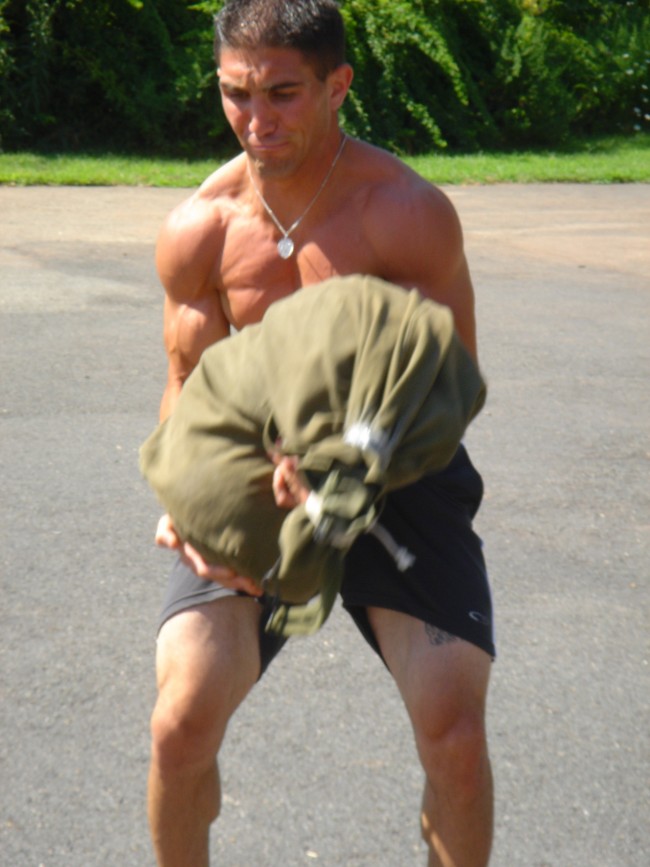
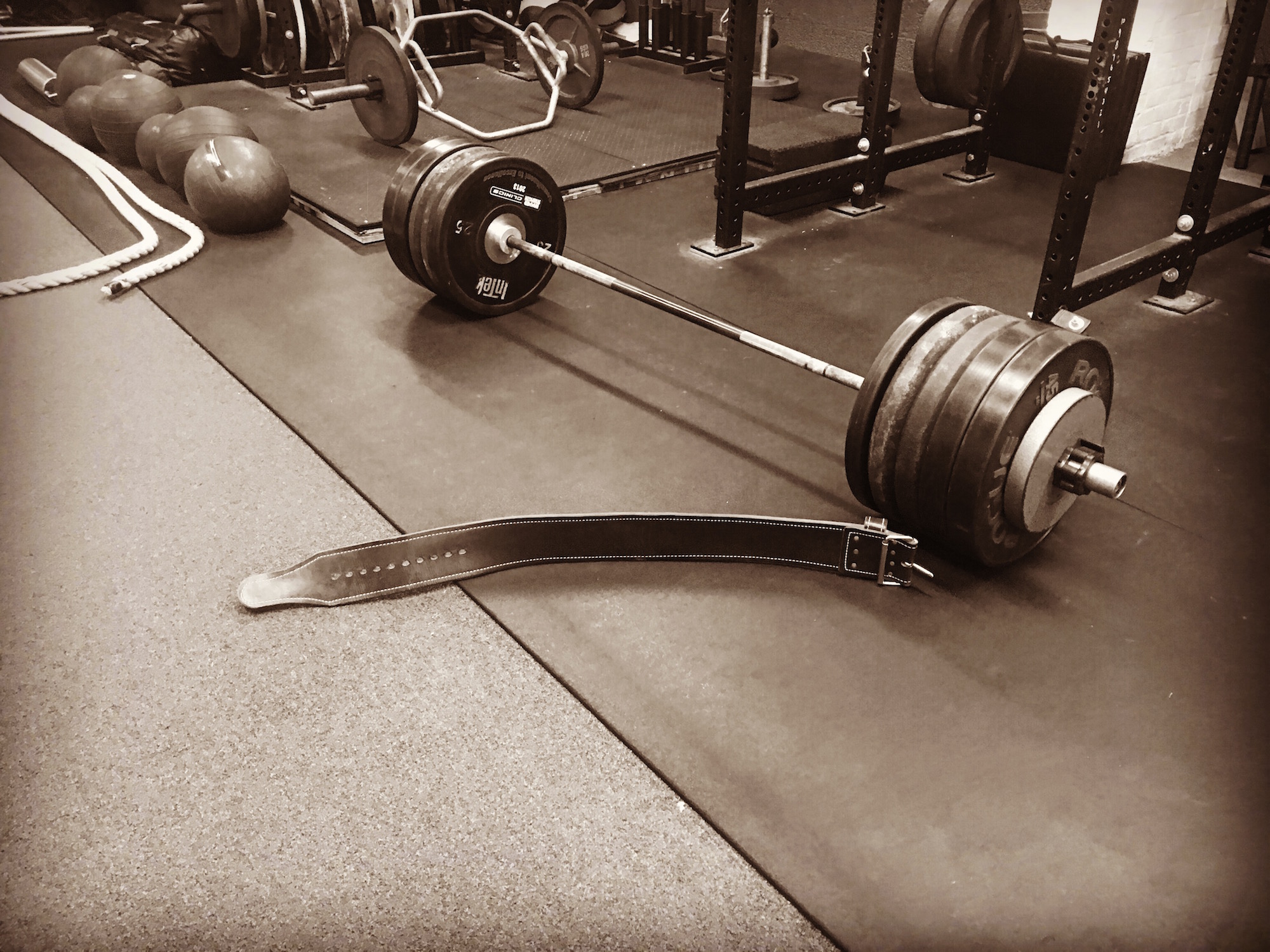
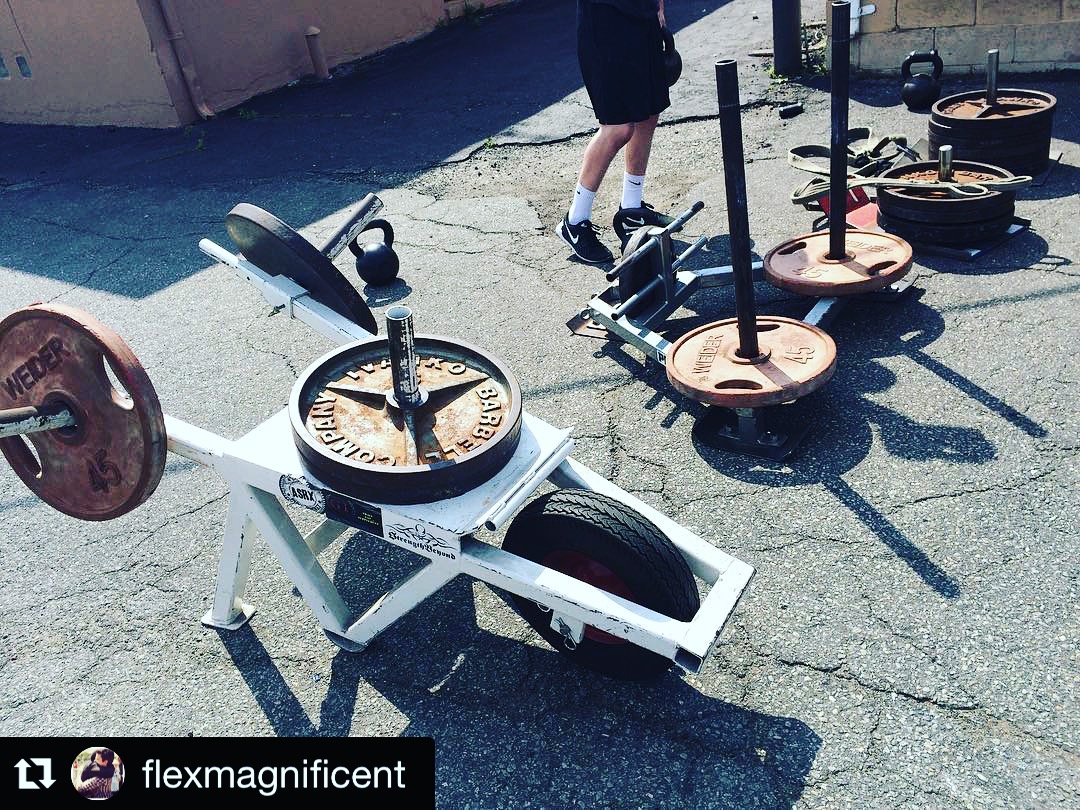
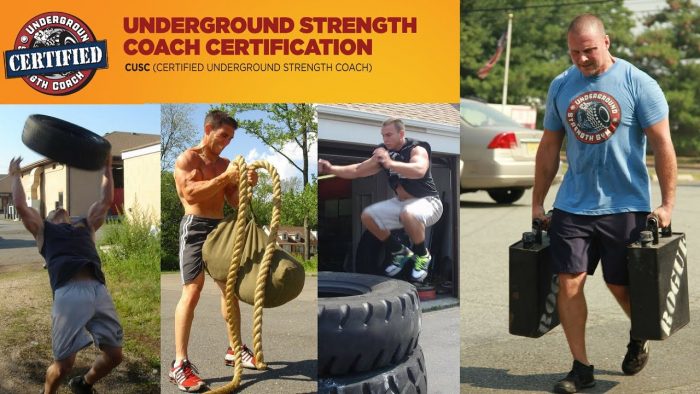
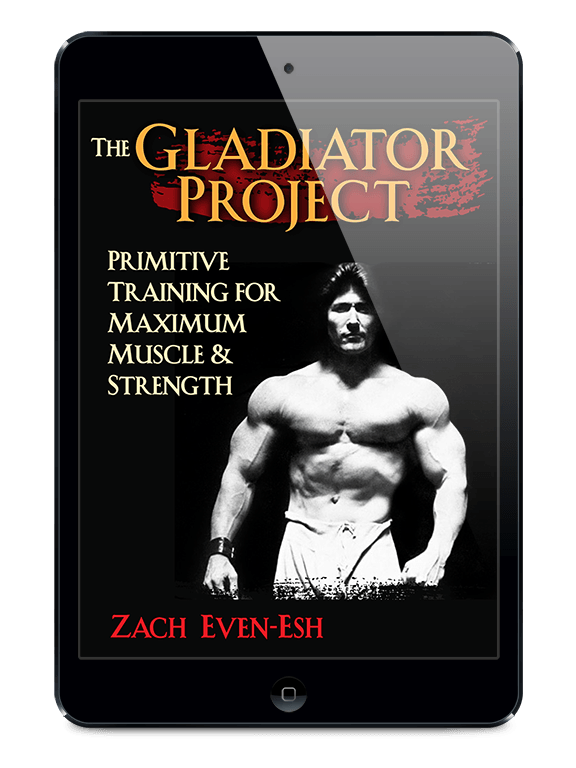
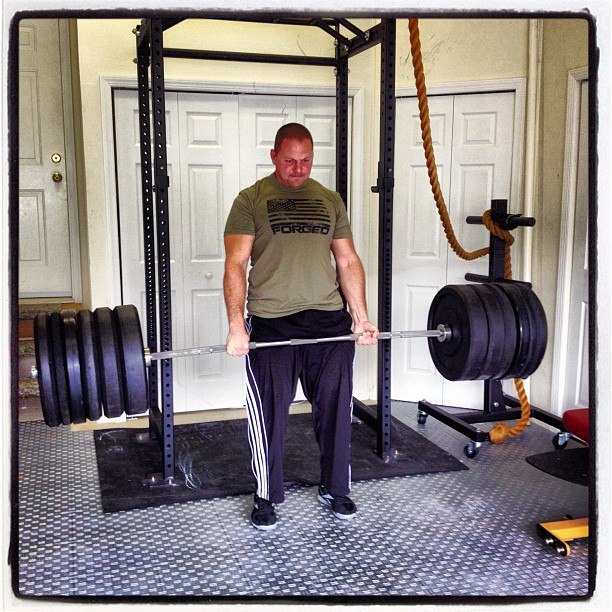
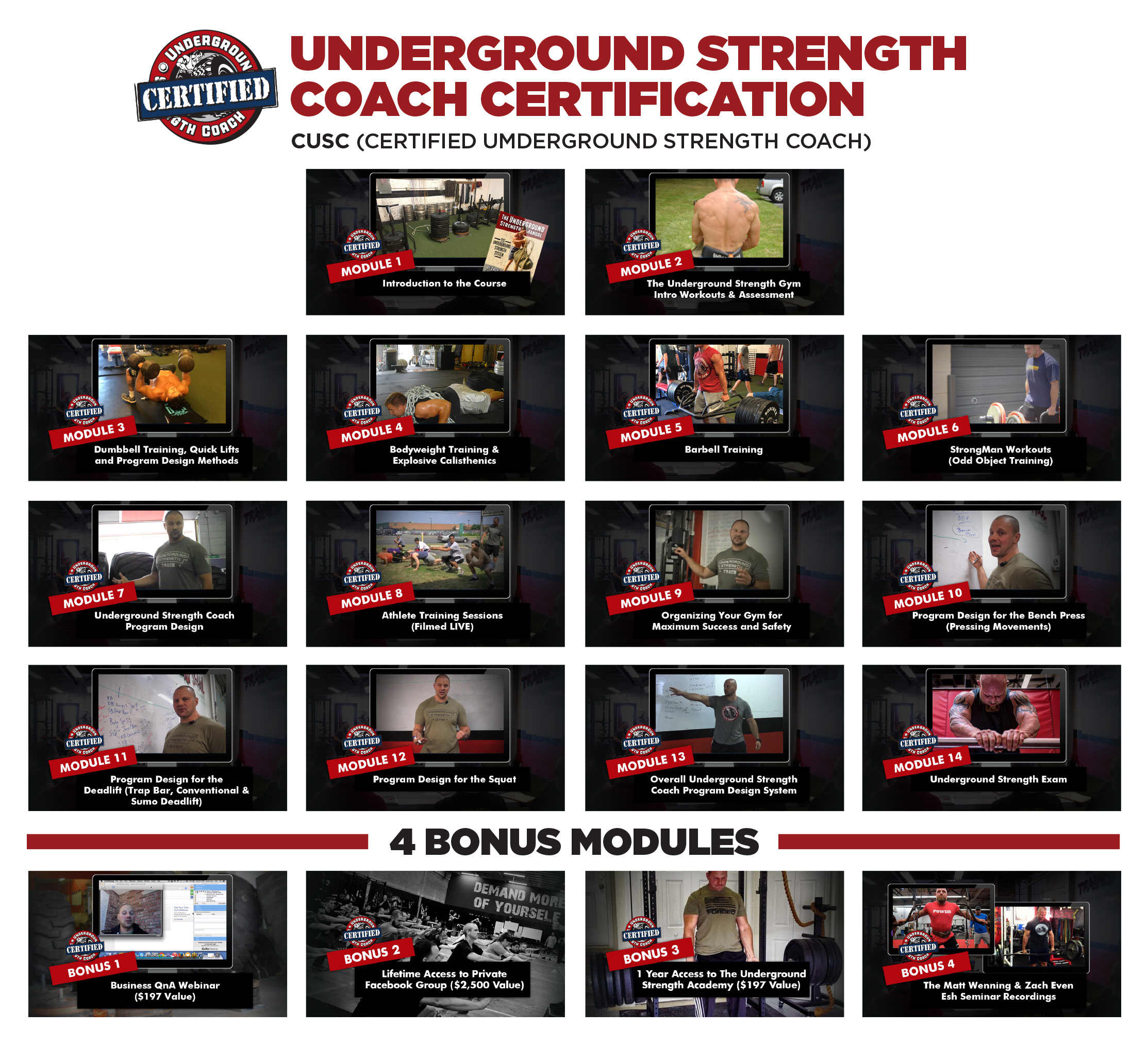
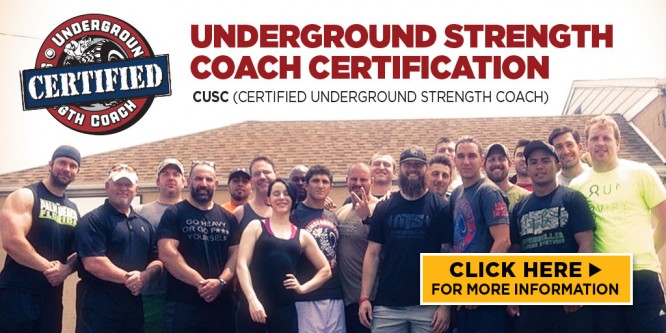
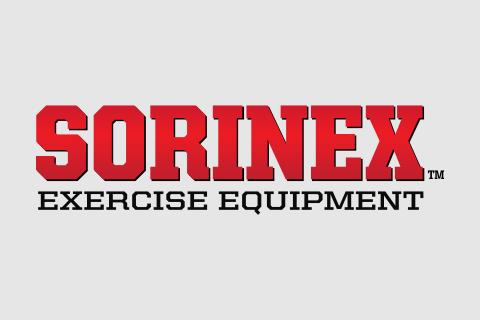
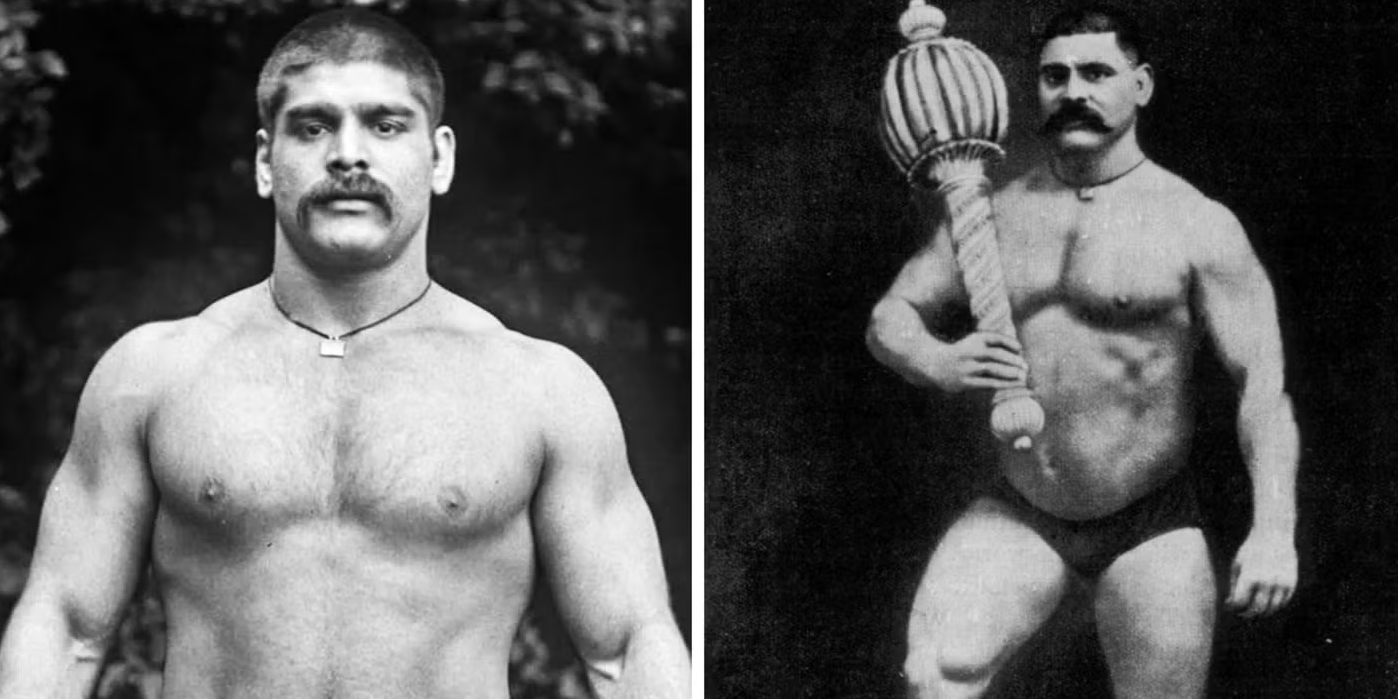
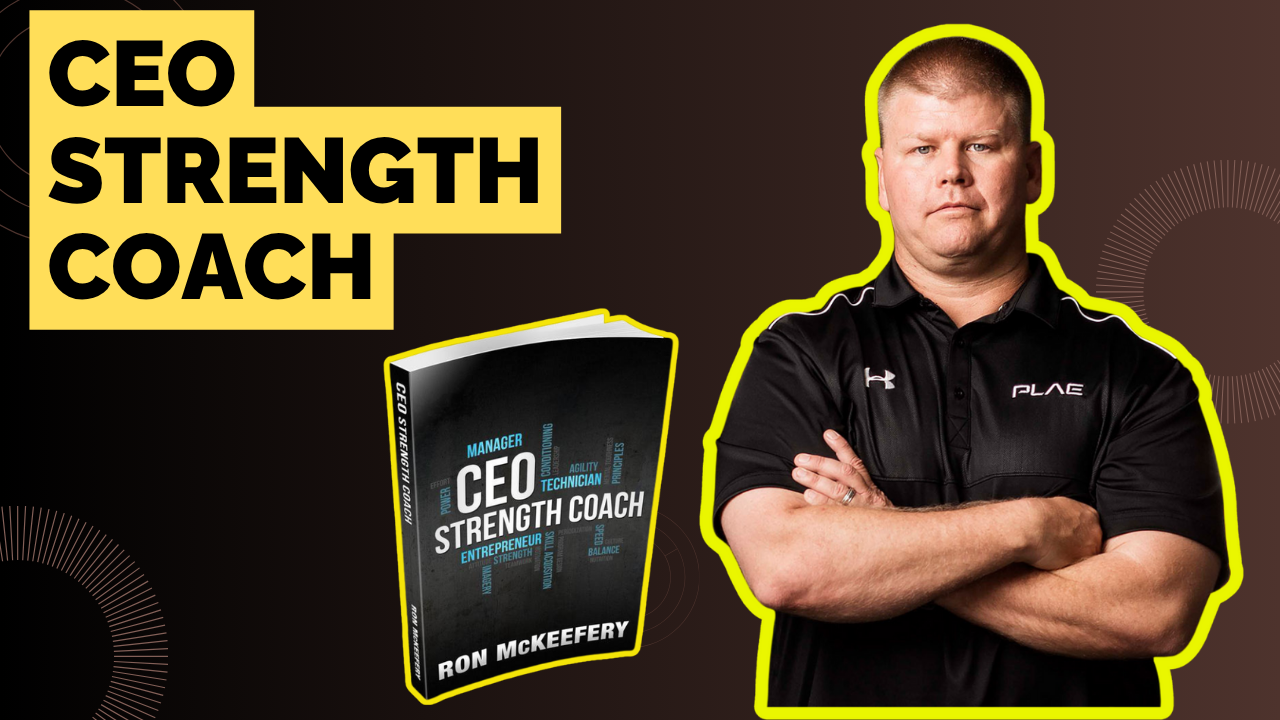
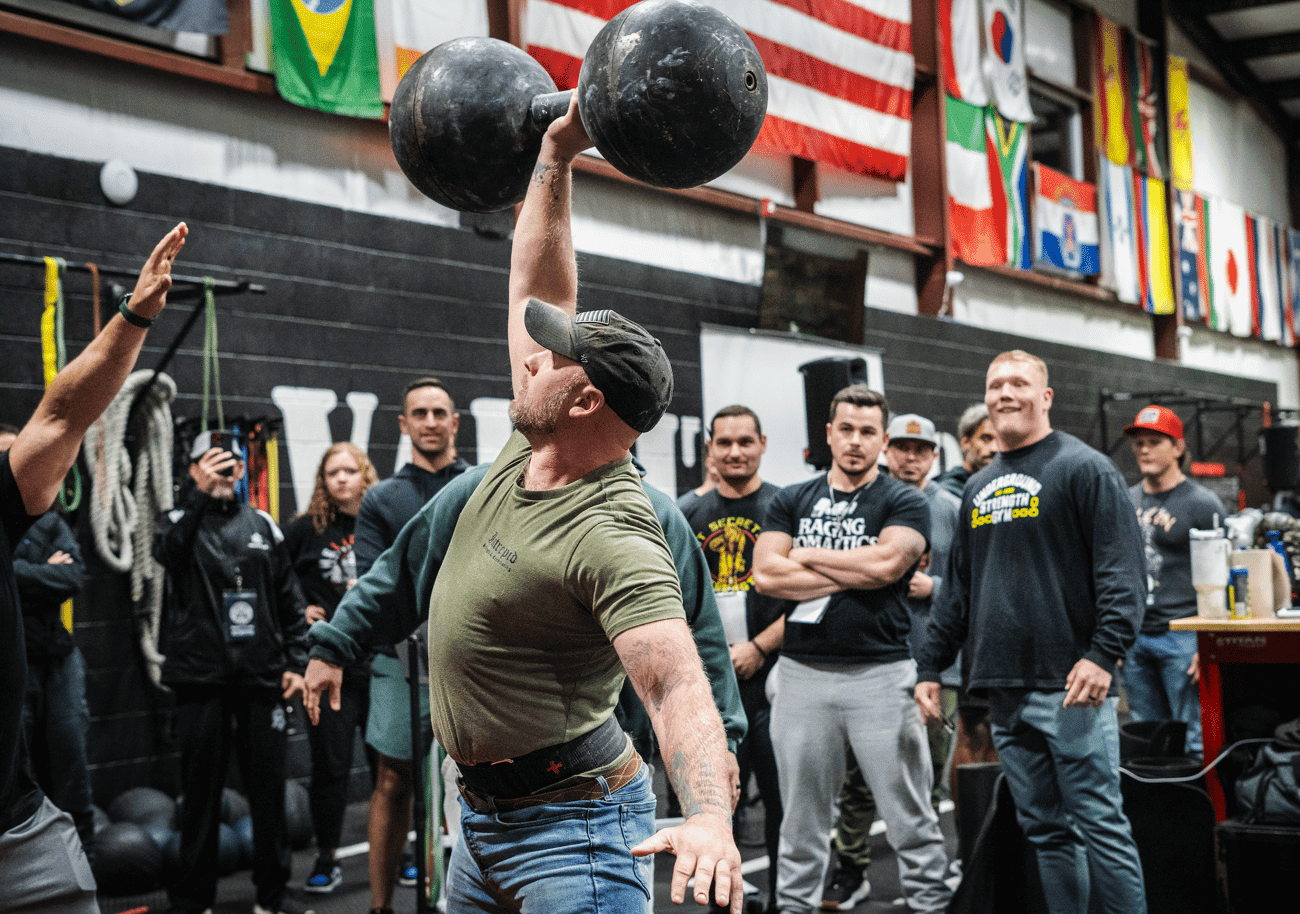
5 Responses
I love this Zach. So many of these examples are great things I use both with myself and with the athletes I am fortunate enough to train. This is a great mashup of the principles I have taken from you and other wise coaches after years of following your content. Everyone wants the next flavor of the month or the crazy training, but we know that the ultimate sophistication truly is simplicity. Most people need to simplify what they’re doing and especially the younger athletes need to hammer the basics as you so strongly wrote about.
Thanks for taking the time to spill your thoughts out in this longer format!
Chris, thanks my bro.
Brilliance with the Basics.
Simple things done Savagely Well.
BIG thanks for reading and supporting.
Chris, my bro, BIG thank you! Keep kicking ass!
You could take just this one article and train for a very long time without getting bored. As always Z, thank you for sharing! I’m gonna share this with a friend who has a young son interested in weights.
TRUTH bomb!
But, how many will actually read this article from top to bottom!?!?!
The rare few will!